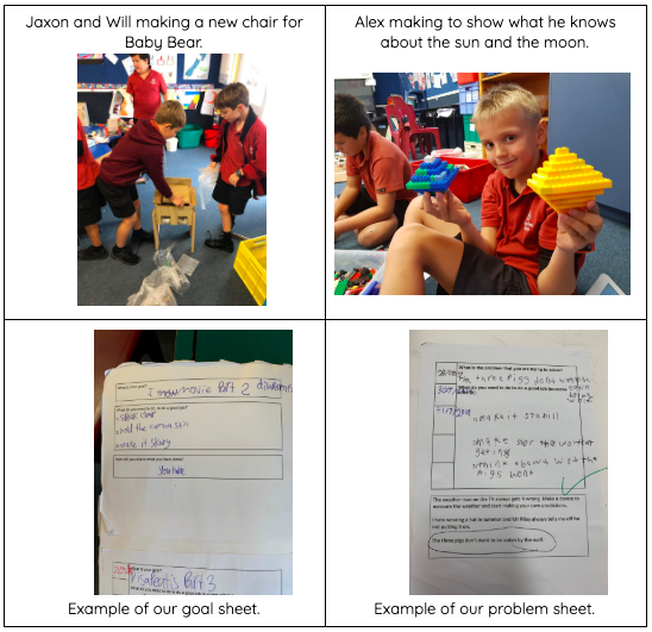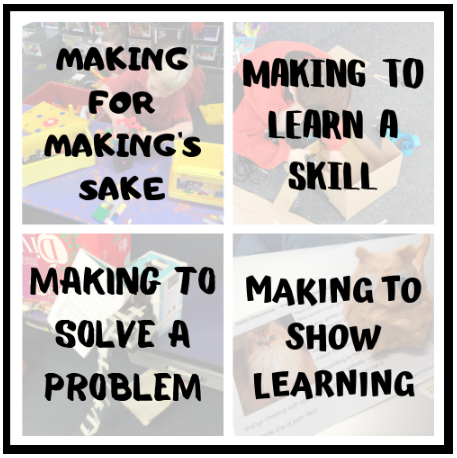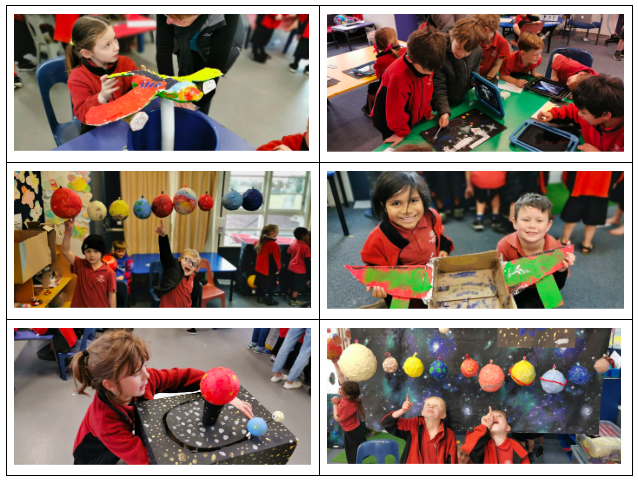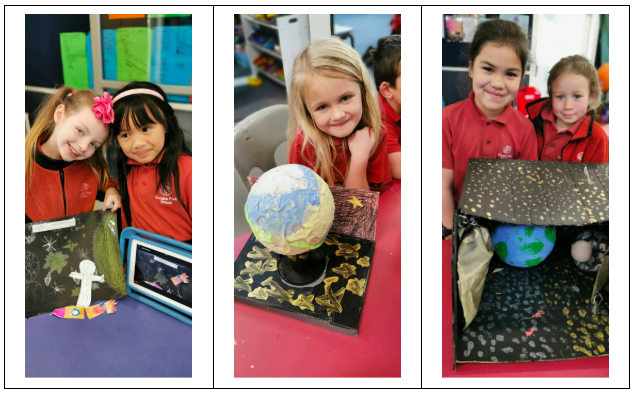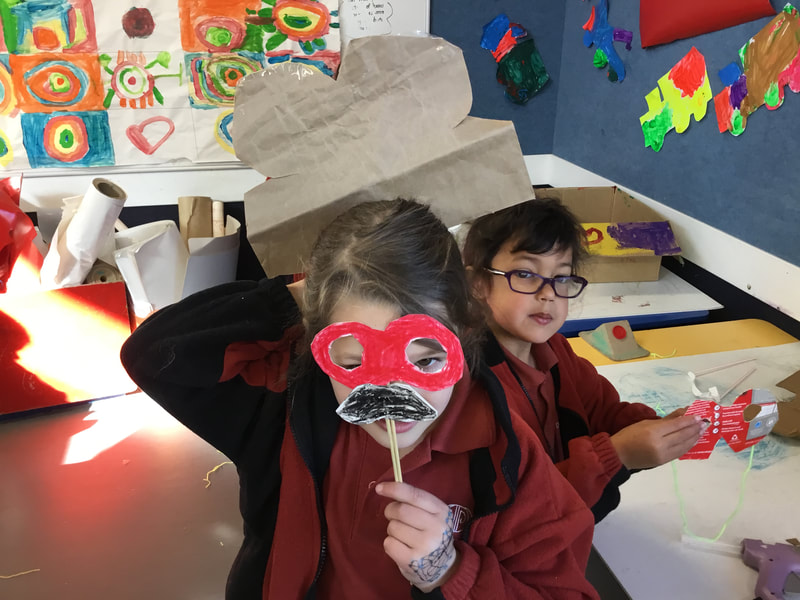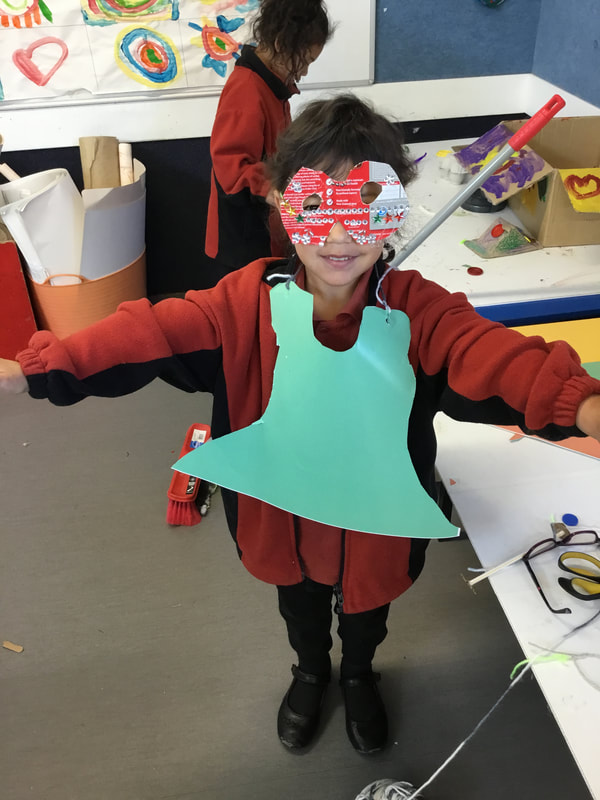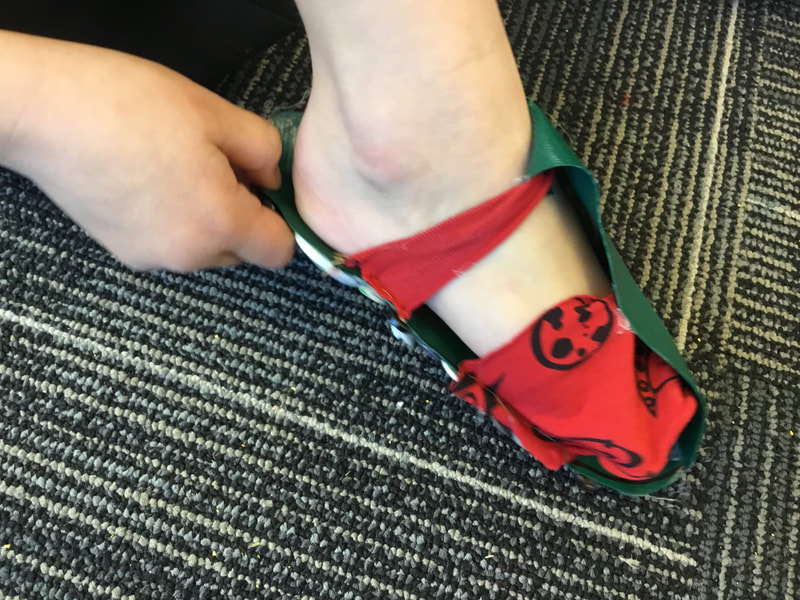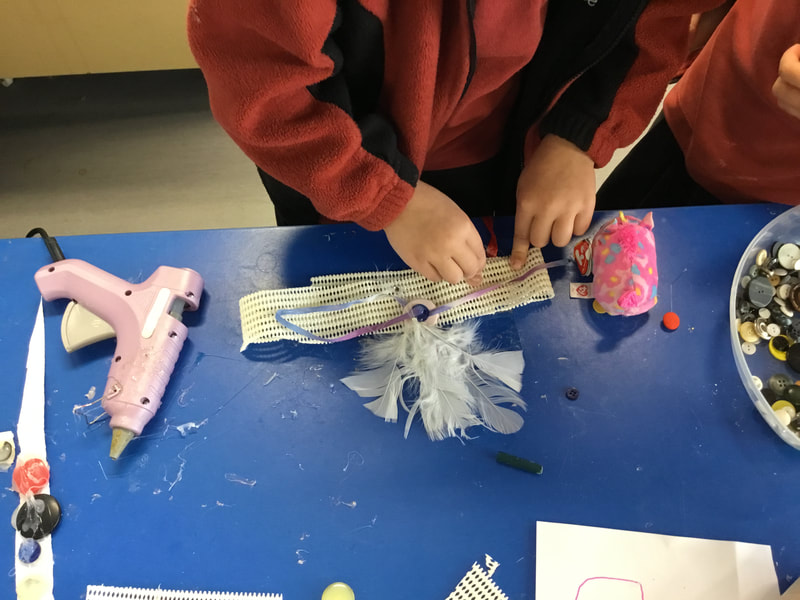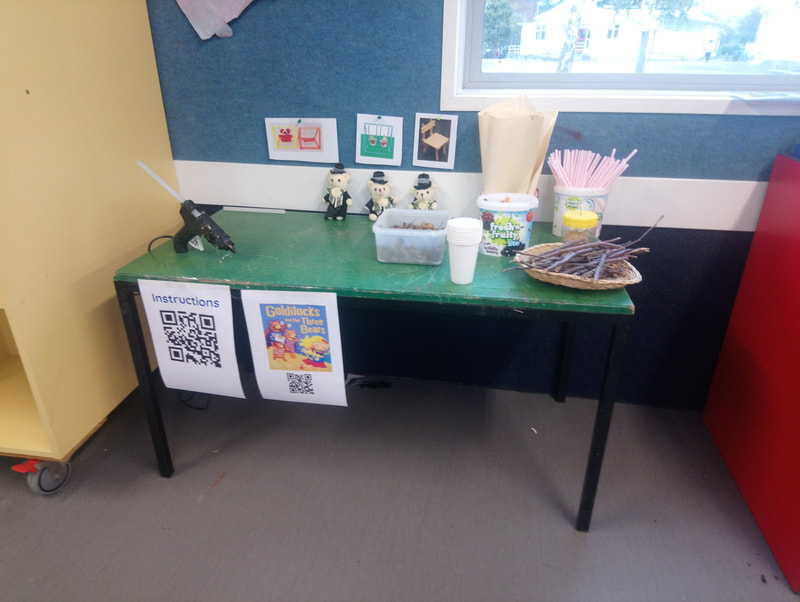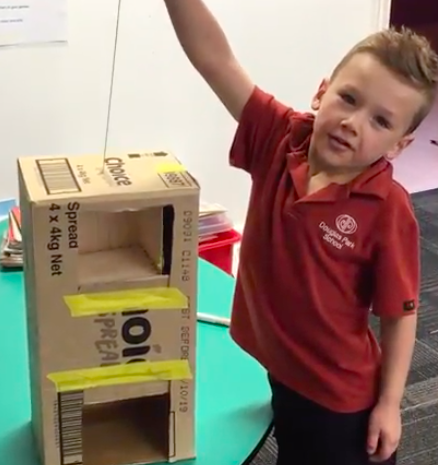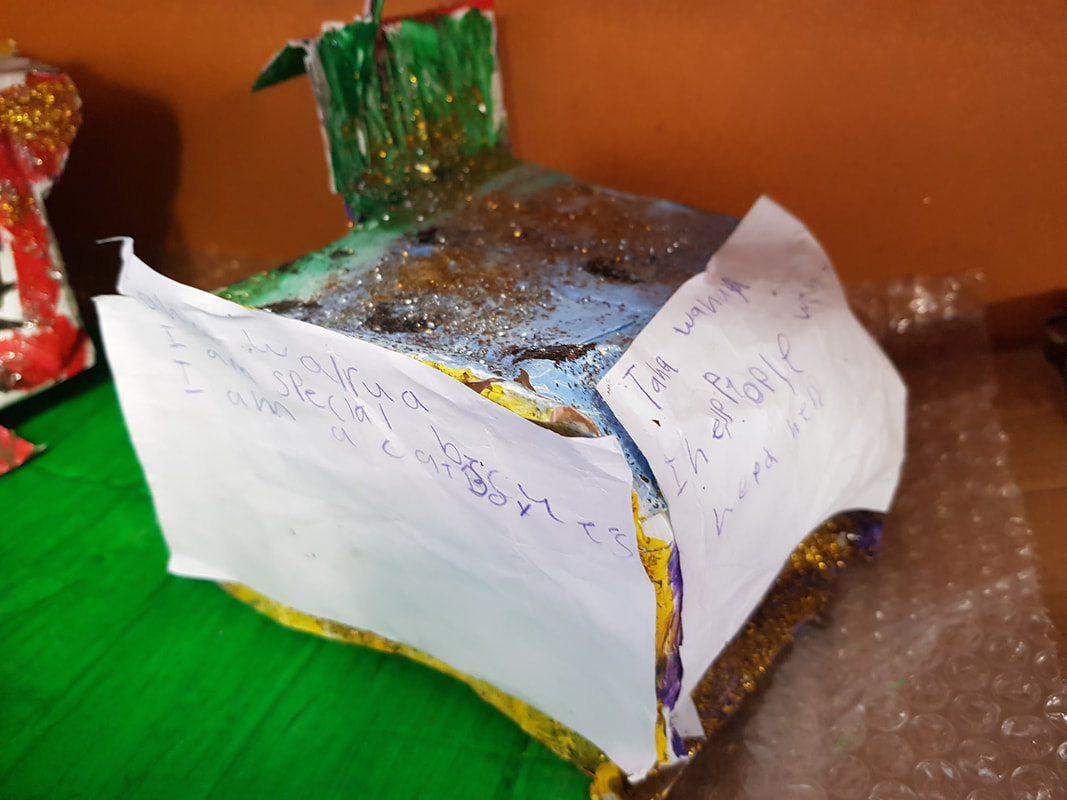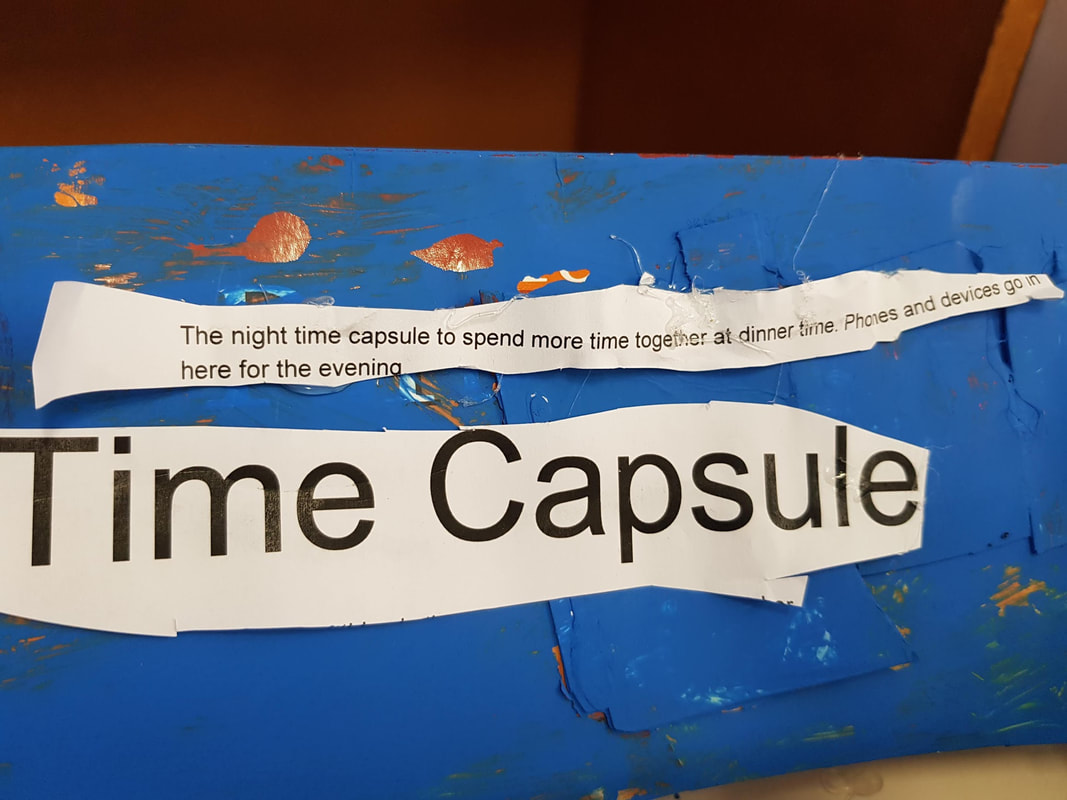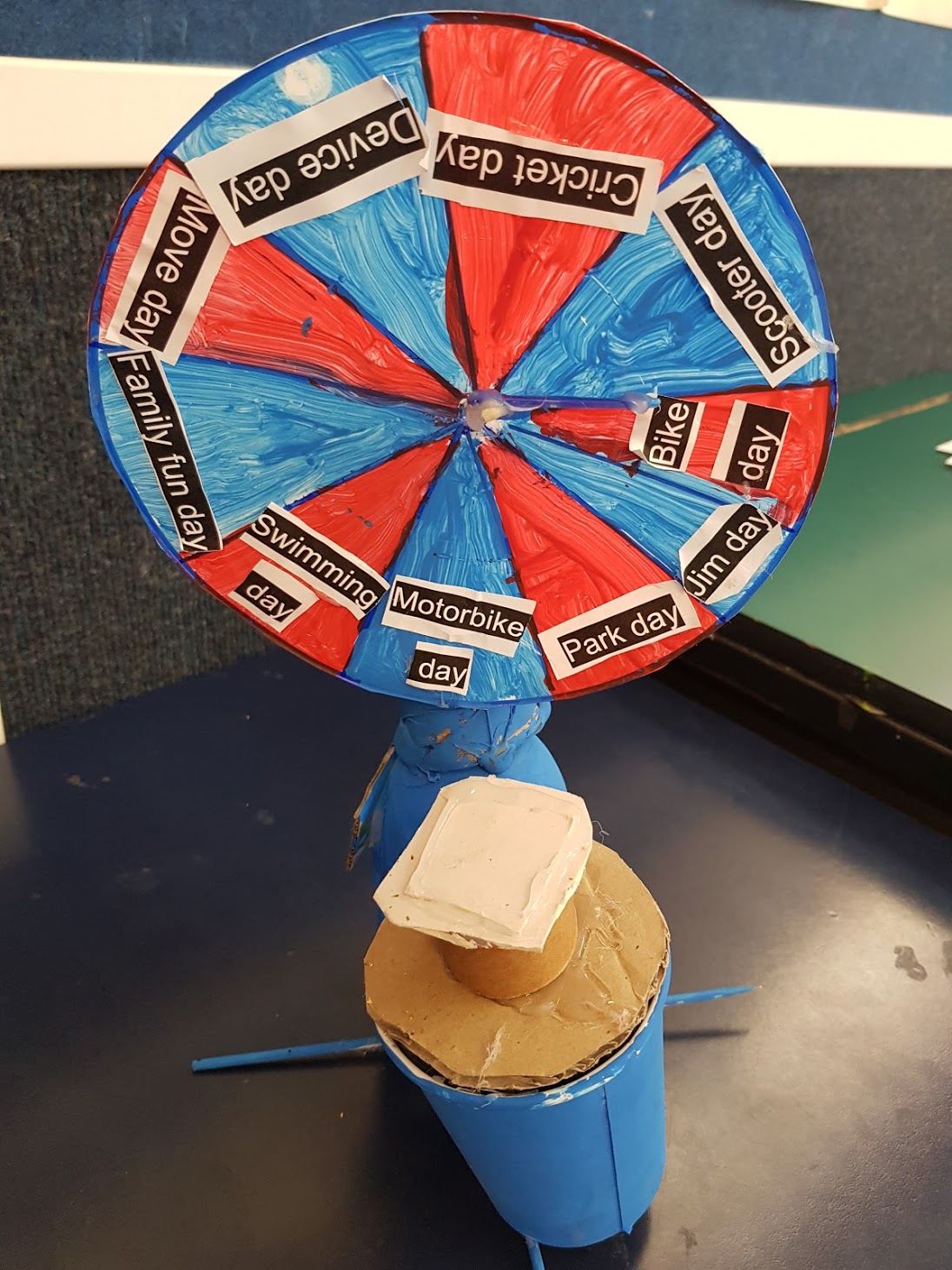|
Students in our learning space have many opportunities to build, make and create over the course of their learning day. During our morning session we have ‘Maker Time’ where students can build, make or create. During this time one teacher is taking reading groups and the other teacher is the ‘Maker Teacher’. The role of the maker teacher is to support students through their making; helping them to get started, introducing the best materials to use for making and/or supporting their core belief development. The ‘Maker Time’ learning has evolved over the year. When we first started it was completely choice driven. We then encouraged students to set a goal for their making and then this changed to determining the problem they were making to solve. We now mix it up and use the different types of making to guide our morning ‘Maker Time.’ Some weeks students make to solve a problem, some weeks they make for the sake of making. Other weeks we have whole class challenges where students are making to learn a new skill (maker or core belief) and other weeks students are making to show their learning.
0 Comments
Introduction: What & Why During our TLIF journey, we have tried all types of approaches to making and creating, both in maker spaces and in play learning environments. We have established that at DPS, we encourage 4 types of making: Making for making’s sake, Making to learn a skill, Making to solve a problem, Making to show learning. All 4 have their place and purpose. They provide a framework for setting up maker tasks and provocations: What type of making will the students be engaging in and what core belief/s will this be helping them to develop? Learnings & Observations: What has been learnt or observed? What challenges or success have we faced?
Making to show learning could be considered a new concept. In a ‘traditional’ schooling environment, when we want to know what students have learnt from a unit of work, we would administer a summative test. All teachers can probably agree that for a lot of kids- these just don’t work! I hated doing tests at school- I never tested well, and as a teacher, I hate giving tests as I can see the look on the kids faces! A mixture of fear, disappointment and you can feel the anxiety levels in the room rising to boiling point. So, why do we do it? Surely there is a better way! We believe there is. We recently completed an inquiry topic with our learners: Our Phenomenal Universe. Each class took their own pathway, guided by the interests of the students. My Year 2 learners were completely hooked in and obsessed with learning all about our solar system. Over the course of the term, kids engaged in a range of tasks from guided inquiry learning groups to provocations in play and reading and writing lessons. This culminated in the action phase, where kids were tasked with making to show their learning. We were apprehensive at first… How will we know that they know things if they just make a rocket?! However, we boxed on, and day by day, we started to see these creations coming to life. Students were collaborating, showing astounding creativity, thinking critically to problem solve and being ridiculously agentic- taking full responsibility for their learning. By the time it came to share our inquiry learning with other classes, we were literally blown away by what our kids and made. Two metre tall rockets, complete models of the solar system, elaborate pop-up posters, stop-motion videos, dioramas, puppet shows… the list goes on! The real trick came though, when the kids had to speak about what they had made, and say how it shows their learning… it’s fair to say that these 6 year olds have a better understanding of our solar system than I ever have! And now there’s no going back…. And the best part? Every single child, no matter their maths stage, their reading and writing level, no matter what their learning ability or home life was like; no matter their circumstances: every single child had created something and were able to show and articulate their learning. Making to show learning for the win! Summary
Within our NE/Yr 1 classroom we have developed maker provocations in order to introduce maker thinking into a play-based classroom. For us, a play-based classroom revolves around choice. Therefore, maker provocations are presented to the students as a class and are then left in the classroom for students to choose (or not) to complete. The aim of the provocations are to expose students to the possibilities of a maker space, without forcing it upon them. Therefore, provocations provide opportunities for students to use a range of tools and skills to make and create with. Tools may include needles and thread, Scratch Junior or Beebots. Skills may include, making something move, such as using pulleys and propellers or digital skills such as coding. As an example, a provocation may invite students to use materials available to them, such as popsicle sticks and rubber bands, to make a propeller for Jolly Rogers boat. Through providing these opportunities within the classroom, we have found that, at the very least, students are exposed to a broader range of maker possibilities. However, those students who are ready and willing, are extended in their play and not only produce some amazing creations, but utilise the skills they have learnt in the provocations, within other making and creating.
Helpful HintsWhat helped us?
What we would change?
Overview This unit tried to combine the concept of Hauora (well being) and a challenge where the students were asked to identify and solve (by making) and problem that was unique to them and their health. Linking the tangible and the conceptual The unit stated with an exploration of the four aspects of hauora (taha tinana, taha hinengaro, taha whanau, and taha wairua). Students were then invited to create their own whare tapawha model and include notes under each area that were specific to them. Some cardboard construction techniques were explicitly taught here. Core Belief: Critical Thinking The next step was linking the conceptual understanding with our core belief of critical thinking and the relevant indicator - problem finding and solving. Students were asked to identify the weakest wall of their whare tapawha and identify a problem associated with that concept. Some examples of student problems included, "my family eats to much junk food," and "my dad and brother just go on devices and don't play with me." Students were then invited to build or created a solution to the unique problem they had identified. Sharing Day Write about importance of having audience and clarity of learning. Review Finish
|
ArchivesCategories |
